
The 1968 Italian Grand Prix was a Formula One motor race held at the Monza Autodrome on 8 September 1968. It was race 9 of 12 in both the 1968 World Championship of Drivers and the 1968 International Cup for Formula One Manufacturers. The 68-lap race was won by McLaren driver Denny Hulme after he started from seventh position. Johnny Servoz-Gavin finished second for the Matra team and Ferrari driver Jacky Ickx came in third.

The 1970 Italian Grand Prix was a Formula One motor race held at the Autodromo Nazionale di Monza on September 6, 1970. It was race 10 of 13 in both the 1970 World Championship of Drivers and the 1970 International Cup for Formula One Manufacturers. The race was marred by the death of Jochen Rindt, who died during the practice session on September 5. Rindt himself went on to become Formula One's only posthumous World Champion to date. The 68-lap race was won by Ferrari driver Clay Regazzoni for his first Grand Prix victory after starting from third position. Jackie Stewart finished second for the Tyrrell team in one of the last races the team used the March chassis and Matra driver Jean-Pierre Beltoise came in third.
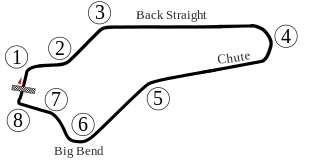
The 1970 United States Grand Prix was a Formula One motor race held on October 4, 1970 at the Watkins Glen Grand Prix Race Course in Watkins Glen, New York. It was race 12 of 13 in both the 1970 World Championship of Drivers and the 1970 International Cup for Formula One Manufacturers.
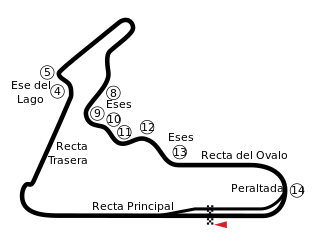
The 1970 Mexican Grand Prix was a Formula One motor race held at the Ciudad Deportiva Magdalena Mixhuca in Mexico City on October 25, 1970. It was race 13 of 13 in both the 1970 World Championship of Drivers and the 1970 International Cup for Formula One Manufacturers. The 65-lap race was won by Ferrari driver Jacky Ickx after he started from third position. His teammate Clay Regazzoni finished second and McLaren driver Denny Hulme came in third.

The 1971 South African Grand Prix, formally the Fifth AA Grand Prix of South Africa, was a Formula One motor race held at Kyalami Circuit on 6 March 1971. It was race 1 of 11 in both the 1971 World Championship of Drivers and the 1971 International Cup for Formula One Manufacturers. The race was won by Mario Andretti who was driving for the Ferrari team in what was his first Formula One victory, but would not win another Formula One race until 1976.
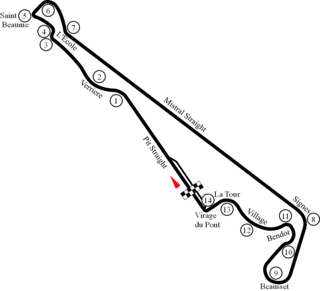
The 1971 French Grand Prix was a Formula One motor race held at the Circuit Paul Ricard on 4 July 1971. It was race 5 of 11 in both the 1971 World Championship of Drivers and the 1971 International Cup for Formula One Manufacturers. The 55-lap race was won by Tyrrell driver Jackie Stewart after he started from pole position. His teammate François Cevert finished second and Lotus driver Emerson Fittipaldi came in third.
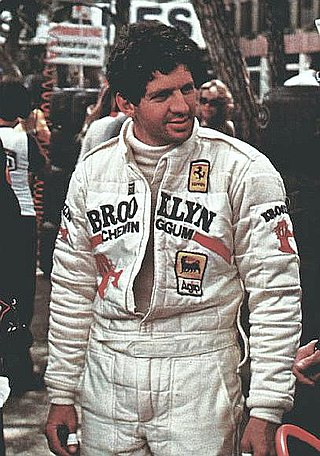
The 1979 Formula One season was the 33rd season of FIA Formula One motor racing. It featured the 1979 World Championship of F1 Drivers and the 1979 International Cup for F1 Constructors which were contested concurrently over a fifteen-round series which commenced on 21 January 1979, and ended on 7 October 1979. The season also included three non-championship Formula One races.
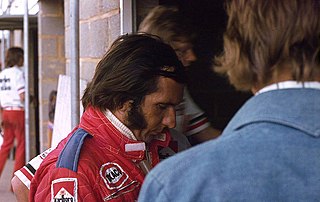
The 1974 Formula One season was the 28th season of FIA Formula One motor racing. It featured the 1974 World Championship of F1 Drivers and the 1974 International Cup for F1 Manufacturers, contested concurrently over a fifteen-race series which commenced on 13 January and ended on 6 October. The season also included three non-championship races.

The 1972 Formula One season was the 26th season of the FIA's Formula One motor racing. It featured the 23rd World Championship of Drivers, the 15th International Cup for F1 Manufacturers, and numerous non-championship Formula One races. The World Championship season commenced on 23 January and ended on 8 October after twelve races.

The 1971 Formula One season was the 25th season of the Fédération Internationale de l'Automobile's Formula One motor racing. It featured the 22nd World Championship of Drivers, the 14th International Cup for F1 Manufacturers and a number of non-championship races open to Formula One cars. The World Championship was contested over eleven races between 6 March and 3 October.

The 1970 Formula One season was the 24th season of the Fédération Internationale de l'Automobile's Formula One motor racing. It featured the 21st World Championship of Drivers, the 13th International Cup for F1 Manufacturers and three non-championship races open to Formula One cars. The World Championship was contested over thirteen races between 7 March and 25 October.
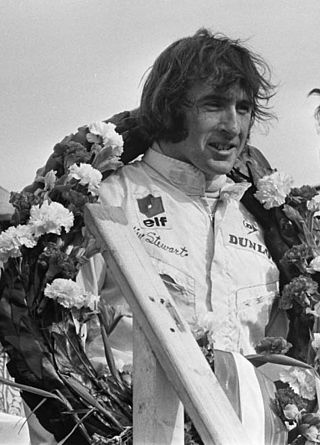
The 1969 Formula One season was the 23rd season of the FIA's Formula One motor racing. It featured the 20th World Championship of Drivers, the 12th International Cup for F1 Manufacturers and four non-championship races open to Formula One cars. The World Championship was contested over eleven races between 1 March and 19 October 1969.

The 1968 Formula One season was the 22nd season of the FIA's Formula One motor racing. It featured the 19th World Championship of Drivers, the 11th International Cup for F1 Manufacturers, and three non-championship races open to Formula One cars. The World Championship was contested over twelve races between 1 January and 3 November 1968.
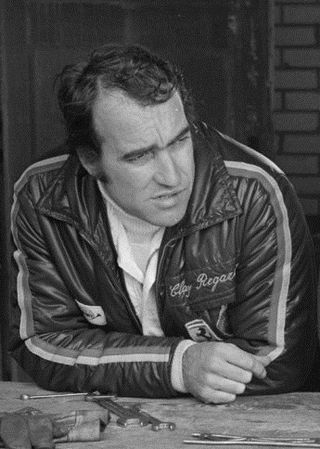
Gianclaudio Giuseppe "Clay" Regazzoni was a Swiss racing driver and broadcaster, who competed in Formula One from 1970 to 1980. Regazzoni was runner-up in the Formula One World Drivers' Championship in 1974 with Ferrari, and won five Grands Prix across 11 seasons.

Ferrari 512 S was a sports prototype car produced by Italian manufacturer Ferrari from 1969 to 1970. As it name suggests, the car had a 5.0L V12 engine. A total 25 units were built.

The Ferrari 312 F1 was the designation of the 3 litre V-12 Formula One cars raced by the Italian team from 1966 to 1969.
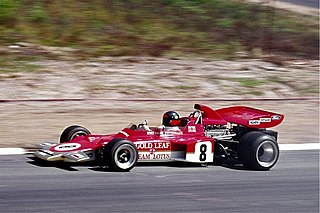
The Lotus 72 is a Formula One car designed by Colin Chapman and Maurice Philippe of Lotus for the 1970 Formula One season. The 72 was a pioneering design featuring inboard brakes, side-mounted radiators in sidepods, and aerodynamic wings producing down-force.

The Ferrari 312T was a Ferrari Formula One car design, based on the 312B3 from 1974. In various versions, it was used from 1975 until 1980. It was designed by Mauro Forghieri for the 1975 season, and was an uncomplicated and clean design that responded well to mechanical upgrades.

Mauro Forghieri was an Italian mechanical engineer, best known for his work as a Formula One racing car designer with Scuderia Ferrari during the 1960s and 1970s. He is credited with introducing the first designed rear wings to Formula One at the 1968 Belgian Grand Prix. He oversaw numerous technical developments during his tenure at Ferrari, including the creation of the 250 GTO and P-series sports racing cars, the Ferrari flat-12 series of engines, Ferrari's first turbocharged engine in the 126 C F1 car, and a prototype semi-automatic transmission in 1979. During Forghieri's tenure with Ferrari, the company won the F1 World Driver's Championship four times and the F1 World Constructors' Championship seven times. After leaving Ferrari in 1987, he worked at Lamborghini and Bugatti then founded the Oral Engineering Group in 1995.
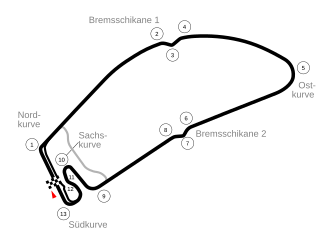
The Jochen Rindt Memorial or the VI Rhein-Pokalrennen was a motor race, run to Formula One rules, held on 13 June 1971 at the Hockenheimring, Germany. The race was run over 35 laps of the circuit, and was dominated by Belgian driver Jacky Ickx in a Ferrari 312B.






















